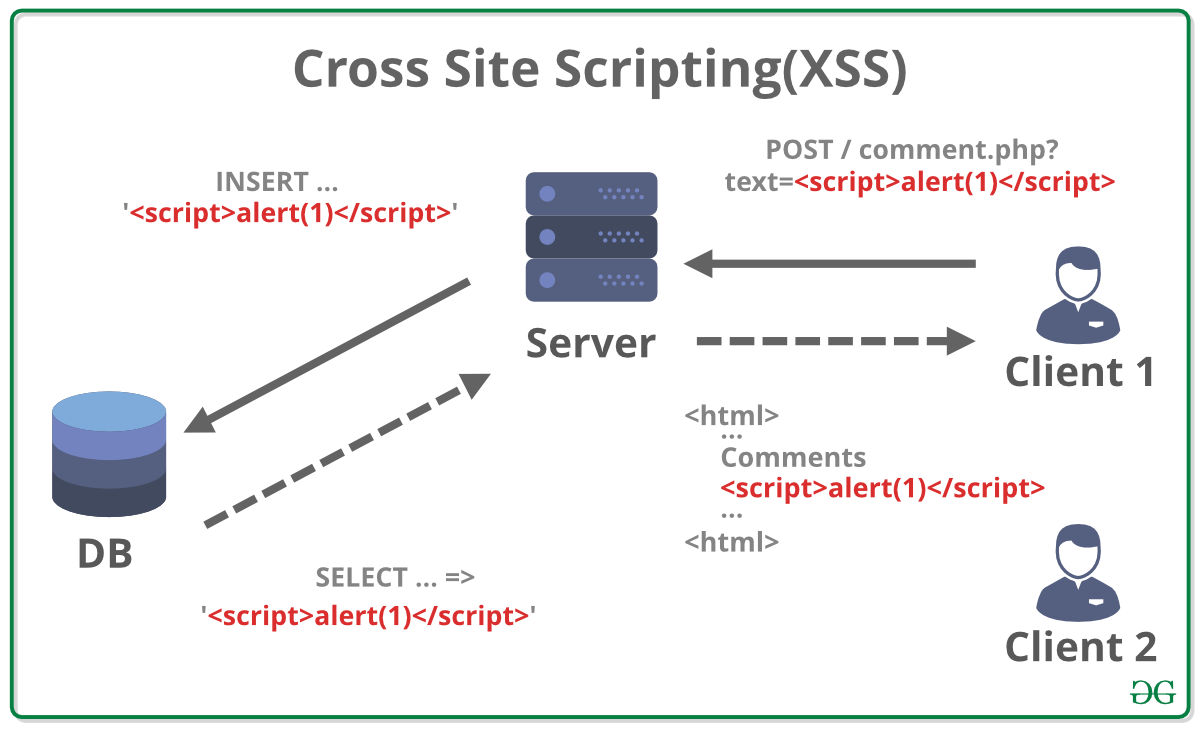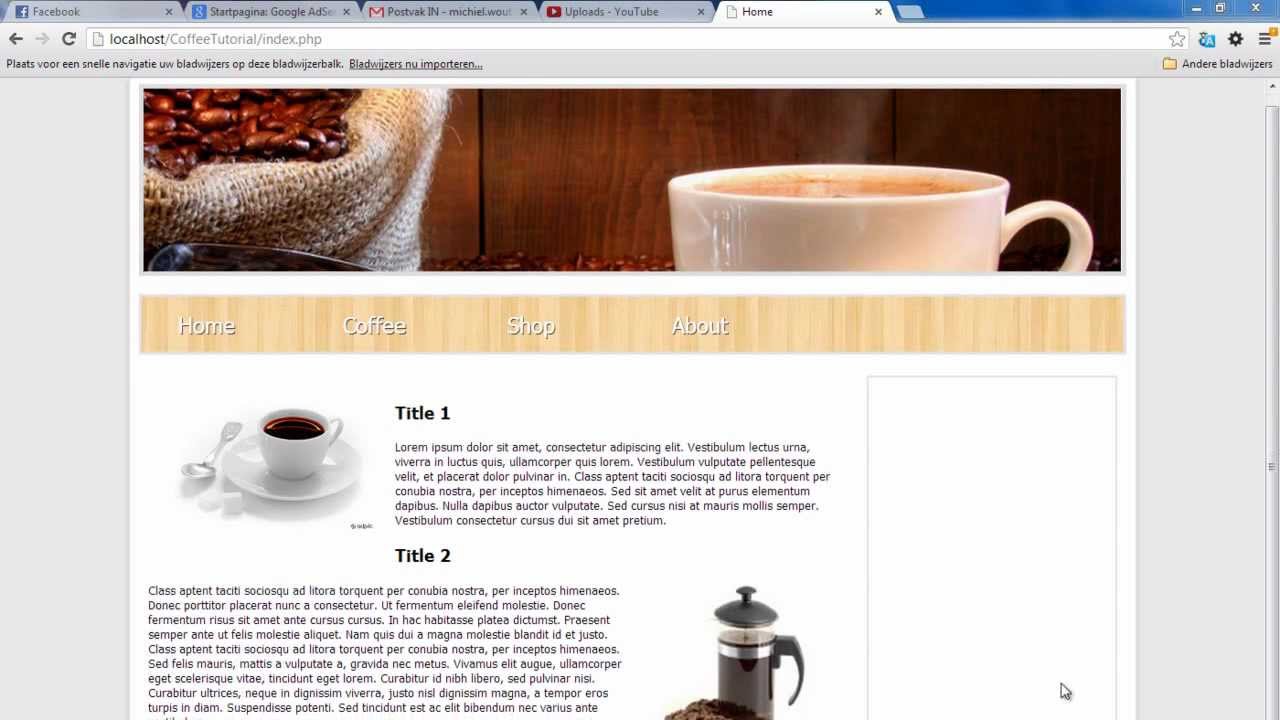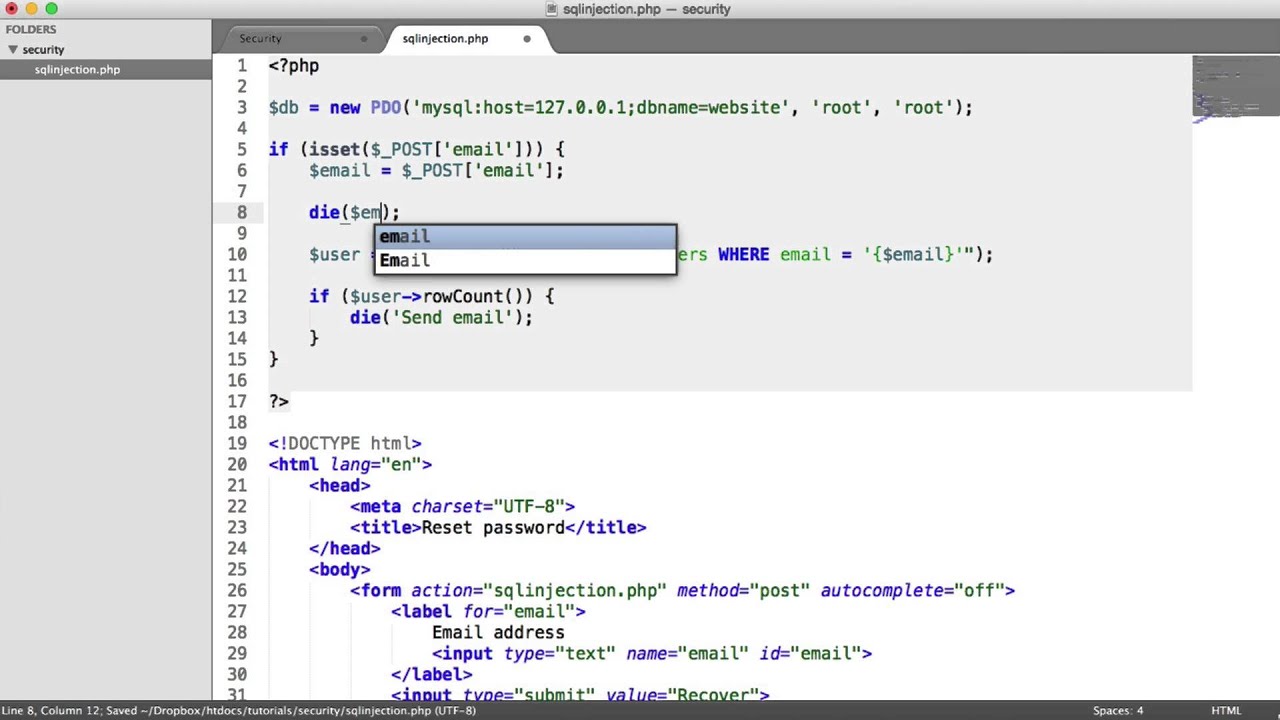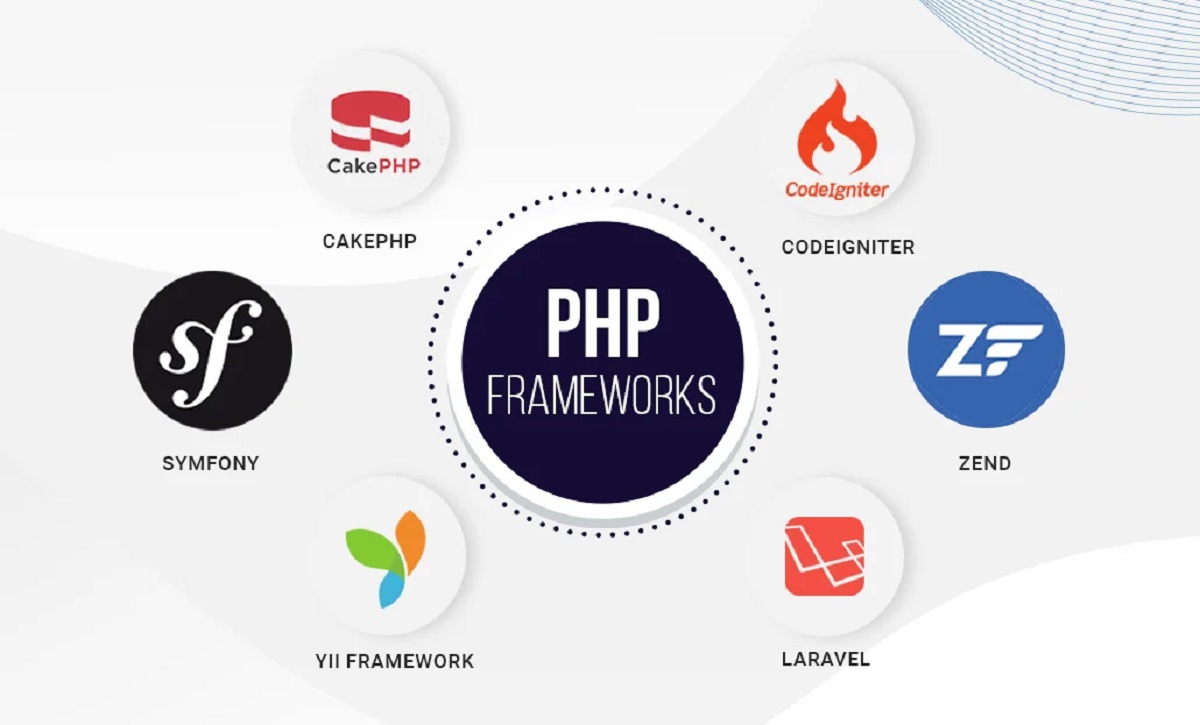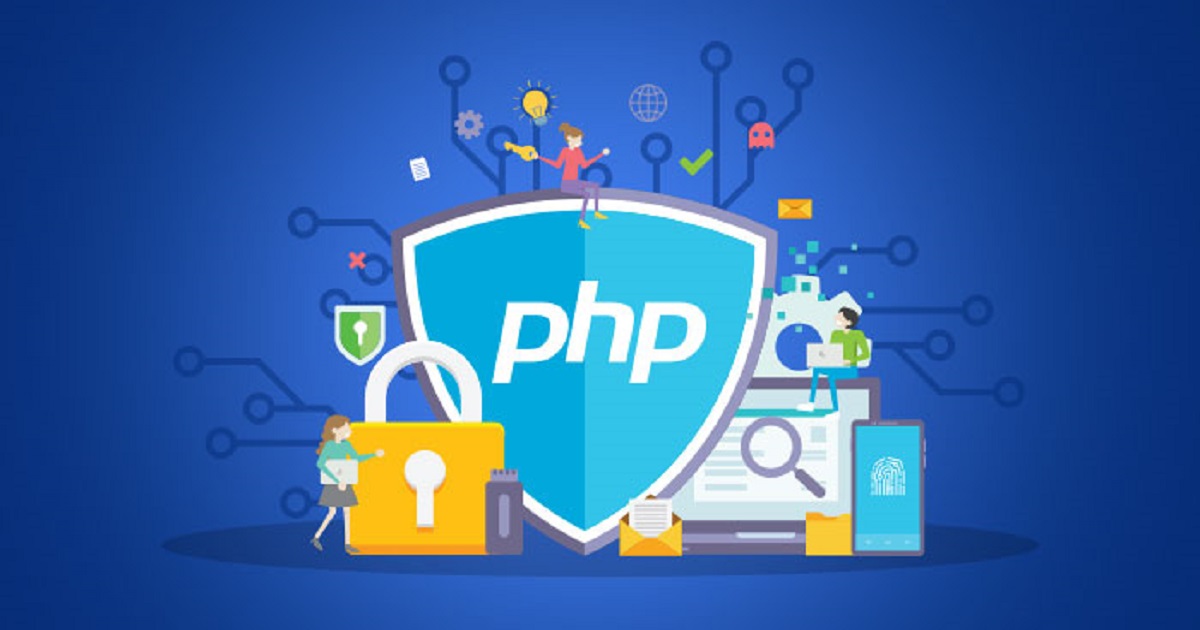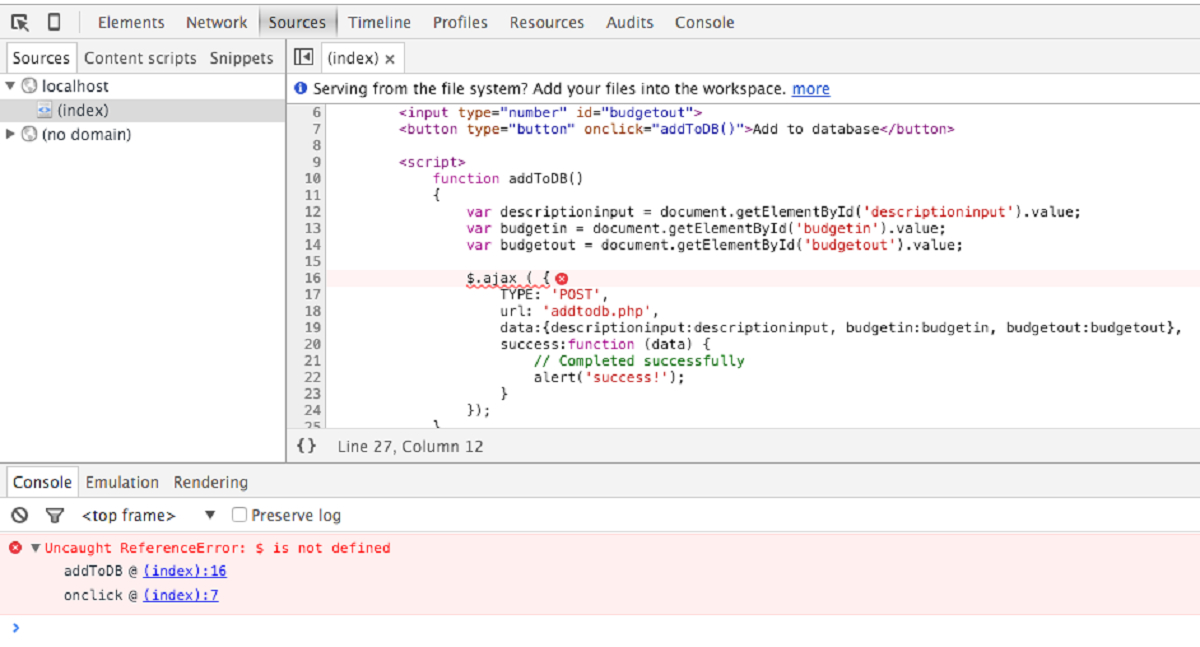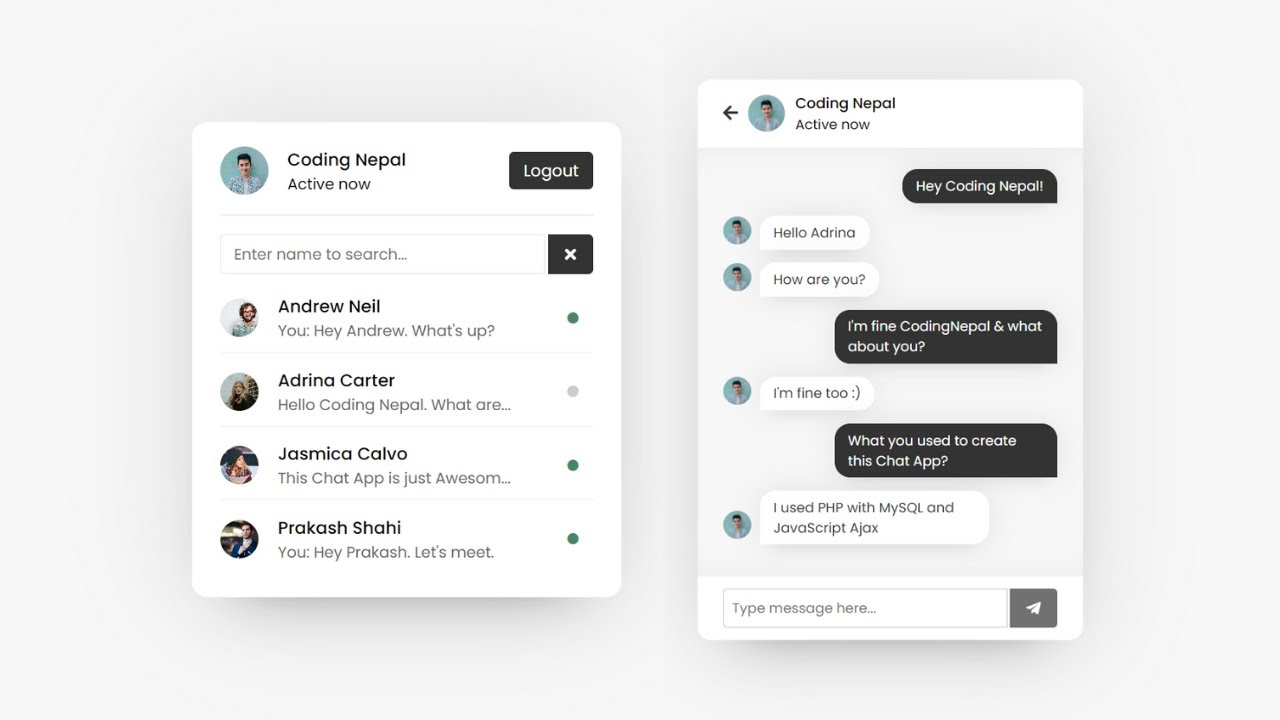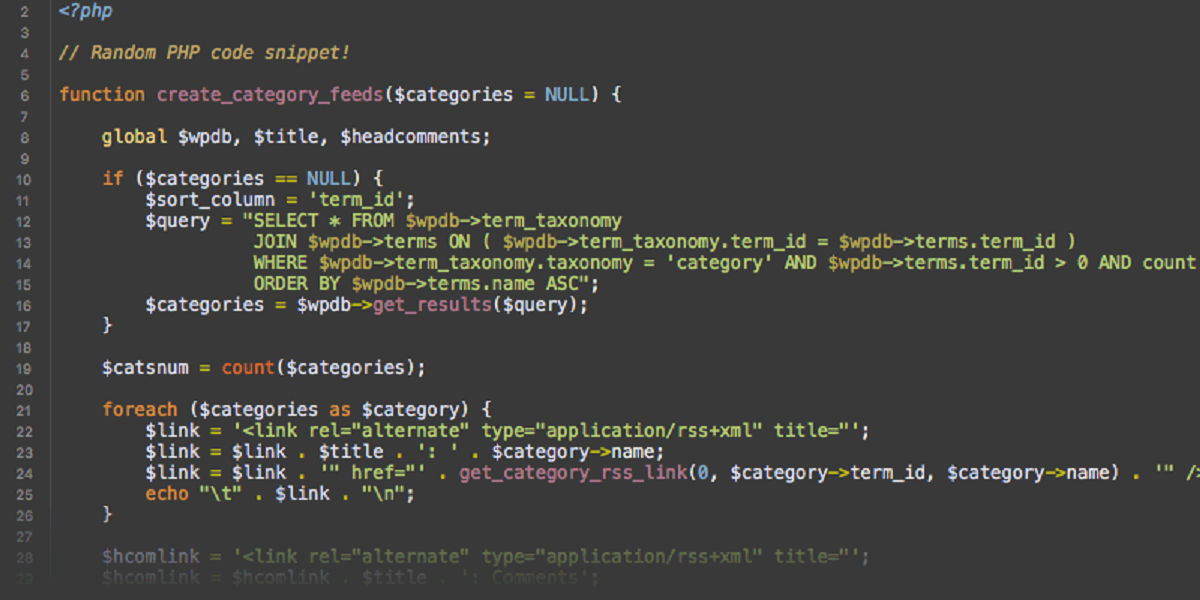Introduction
Welcome to our guide on preventing cross-site scripting (XSS) attacks in PHP. In today’s interconnected digital world, web application security is of paramount importance. XSS attacks have become one of the most prevalent and dangerous security vulnerabilities that web developers need to address.
Cross-site scripting refers to a web security vulnerability where an attacker can inject malicious scripts into trusted websites, potentially compromising user data and web application functionality. These attacks exploit the trust that websites place in user-generated content, allowing hackers to execute scripts in users’ browsers and steal sensitive information or perform unauthorized actions.
In this guide, we will explore the different types of XSS attacks, understand how they work, and most importantly, learn best practices to prevent XSS vulnerabilities in PHP-based web applications. By implementing proper security measures, you can safeguard your web application and protect your users from the risks associated with XSS attacks.
It is important to note that while this guide focuses on preventing XSS attacks specifically in PHP, many of the principles and techniques discussed can be applied to other web development languages and frameworks as well. Let’s dive in and learn how to secure your PHP applications against XSS threats.
What is Cross Site Scripting (XSS)?
Cross-site scripting (XSS) is a type of security vulnerability that occurs when a web application fails to properly validate user input. Attackers take advantage of this vulnerability by injecting malicious scripts into trusted websites, allowing them to manipulate the content that users see or execute unauthorized actions within their browsers.
XSS attacks can have serious consequences, including stealing sensitive user information, redirecting users to malicious websites, manipulating website content, and even spreading malware. Among different types of web vulnerabilities, XSS is particularly dangerous because it directly targets users and their browsers, making it a popular choice for cybercriminals.
There are three main types of XSS attacks:
- Stored XSS: Also known as persistent or type-I XSS, stored XSS occurs when user input is permanently stored on a targeted website and displayed to users. This can happen in comment sections, user profiles, or public message boards where the input is not properly sanitized.
- Reflected XSS: Also known as non-persistent or type-II XSS, reflected XSS exploits vulnerabilities in websites that immediately return user input as part of the website’s response. This can occur in search fields, login forms, or any other input fields that echo user input back to the page without proper validation and sanitization.
- DOM-based XSS: DOM-based XSS attacks exploit vulnerabilities in the Document Object Model (DOM) of a website. Rather than targeting the server-side code, DOM-based XSS injects malicious scripts that manipulate the client-side code (usually JavaScript) and modify the website’s behavior or content dynamically.
Understanding the different types of XSS attacks is crucial for implementing effective security measures. In the sections that follow, we will explore how XSS attacks work and discuss best practices to prevent them in your PHP web applications.
Types of XSS Attacks
Cross-Site Scripting (XSS) attacks come in various forms, each with its own characteristics and methods of exploitation. Understanding these types of attacks is essential to develop effective safeguards against them. Let’s explore the three main types of XSS attacks:
- Stored XSS: Also known as persistent or type-I XSS, this attack occurs when malicious scripts are permanently stored on a targeted website. The injected scripts are then served to other users when they access the affected pages. Attackers typically exploit areas where user-generated content, such as comments or message boards, is not properly sanitized and validated for malicious code.
- Reflected XSS: Also known as non-persistent or type-II XSS, this attack involves injecting malicious scripts that are only reflected back to the user in a specific HTTP response. Attackers typically craft URLs containing the malicious payload and deceive users into clicking them. When users click the manipulated links, the script is executed in their browsers, allowing the attacker to steal sensitive information or perform unauthorized actions.
- DOM-based XSS: This type of XSS attack occurs when the client-side code (usually JavaScript) manipulates the Document Object Model (DOM) of a web page. Rather than targeting the server-side code, the attacker injects scripts that modify the website’s behavior or content dynamically. DOM-based XSS attacks are especially dangerous as they can directly affect the functionality and user experience of the web application.
It is important to note that XSS attacks can be further categorized based on the context in which they occur. These contexts include HTML context, attribute context, JavaScript context, and more. Each context requires specific prevention techniques to ensure comprehensive security.
By understanding the different types of XSS attacks and their specific characteristics, developers can implement the necessary measures to protect their PHP web applications against these vulnerabilities. In the next section, we will delve deeper into how XSS attacks work and explore best practices for preventing them.
Understand How XSS Works
Before we dive into the best practices to prevent cross-site scripting (XSS) attacks, it is important to have a solid understanding of how these attacks work. By understanding the mechanics of XSS, developers can better protect their PHP web applications against this type of vulnerability.
XSS attacks target the trust that websites place in user-generated content. Attackers exploit this trust by injecting malicious scripts into web pages, which are then executed by unsuspecting users’ browsers. Let’s walk through the typical steps of an XSS attack:
- Injection: The attacker identifies a vulnerable input field or parameter within a website. This could be a comment box, a search field, or a user profile field. The attacker then injects malicious code, typically in the form of JavaScript, into the vulnerable field.
- Execution: When a user accesses the page containing the injected script, their browser interprets and executes the code. This allows the attacker’s script to run with the same privileges as the website itself, potentially leading to security breaches or unauthorized actions.
- Impact: Once the script is executed, the attacker can manipulate the user’s browsing experience in various ways. They may steal sensitive user information, such as login credentials or credit card details, redirect the user to a malicious website, modify the content of the page, or perform other harmful actions.
To prevent XSS attacks in PHP, it’s crucial to implement security measures that mitigate these steps. Proper input validation and output sanitization are key components of XSS prevention. By validating and sanitizing user input, you reduce the risk of accepting and displaying malicious scripts. Additionally, escaping output ensures that any user-generated content displayed on the website is treated as plain text, preventing it from being interpreted as executable code.
In the next section, we will explore best practices for preventing XSS vulnerabilities in PHP web applications. By implementing these practices, you can significantly enhance the security of your PHP code and protect your users from potential threats.
Best Practices for Preventing XSS in PHP
When it comes to preventing cross-site scripting (XSS) vulnerabilities in PHP web applications, it is crucial to adopt best practices that focus on input validation, output sanitization, and overall secure coding practices. By following these guidelines, you can significantly reduce the risk of XSS attacks and enhance the security of your PHP code. Here are some best practices to consider:
- Sanitize User Input: Always validate and sanitize user input before accepting it in the application. Use PHP functions such as `htmlspecialchars()` or `filter_var()` to strip out any potentially malicious code and ensure that the input is treated as plain text.
- Use Prepared Statements: When interacting with a database, utilize prepared statements or parameterized queries instead of concatenating user input directly into SQL queries. Prepared statements automatically handle input sanitization, preventing SQL injection attacks that could lead to XSS vulnerabilities.
- Implement Content Security Policy (CSP): Content Security Policy is a powerful security header that instructs the browser on what types of content are allowed to be loaded on a web page. By enforcing a strict CSP, you can limit the execution of untrusted scripts and prevent XSS attacks.
- Use PHP Security Libraries: Leverage well-known PHP security libraries and frameworks, such as HTML Purifier or AntiXSS, that provide built-in functionality to sanitize and filter user input. These libraries are specifically designed to mitigate XSS vulnerabilities, making it easier to ensure the security of your PHP code.
- Escape Output: Whenever you output user-generated content to the browser, make sure to escape the output using appropriate functions like `htmlspecialchars()`. This prevents any user input from being interpreted as executable code by the browser.
- Use Frameworks with Built-in XSS Protection: Consider using PHP frameworks that have built-in XSS protection mechanisms. Frameworks like Laravel, Symfony, and CodeIgniter implement security features by default, reducing the chances of XSS vulnerabilities if used properly.
- Regularly Update PHP and Libraries: Keep your PHP version and relevant libraries up to date with the latest security patches. XSS vulnerabilities are constantly being discovered and patched, so keeping your software updated is crucial in protecting your web application.
By following these best practices and adopting a proactive approach to web application security, you can significantly reduce the risk of XSS vulnerabilities in your PHP code. However, it is important to note that XSS prevention is an ongoing effort, and regular security audits and testing should be conducted to identify and mitigate any potential vulnerabilities.
Sanitize User Input
One of the fundamental practices for preventing cross-site scripting (XSS) vulnerabilities in PHP is to properly sanitize user input. All user-supplied data should be thoroughly validated and sanitized before it is processed or stored in the web application. By doing so, you can prevent the execution of any potentially malicious scripts that could be injected by attackers. Here are some tips for effectively sanitizing user input:
- Validate input: Ensure that the input received from users adheres to expected formats or patterns. Validate input against specific requirements, such as ensuring that an email address is in a valid format or a password meets the required complexity criteria.
- Use filter functions: PHP provides built-in filter functions, such as `filter_var()` and `filter_input()`, which can be used to sanitize and validate different types of data, including strings, integers, URLs, and more. These filter functions offer a wide range of options to validate and sanitize user input effectively.
- Escape special characters: Before using user input in output or database queries, escape any special characters that could be interpreted as code. The `htmlspecialchars()` function is commonly used to convert special characters to their HTML entities, preventing them from being interpreted as code by the browser.
- Limit input length: Set reasonable length limits for different input fields to prevent potential attacks that exploit excessively long inputs. By imposing sensible limits, you can mitigate the risk of buffer overflow attacks and other vulnerabilities that may arise from processing overly long or malicious inputs.
- Avoid relying solely on client-side validation: While client-side validation can enhance user experience and provide instant feedback, it should not be solely relied upon for security purposes. Always perform server-side validation to ensure the integrity and safety of user input.
- Regularly update or patch input validation code: Keep your validation code up to date with the latest security practices and patches. As new vulnerabilities and attack techniques emerge, it is important to stay informed and update your validation code accordingly.
Remember, sanitizing user input is a crucial step in preventing XSS vulnerabilities, but it is not a foolproof solution. It is always recommended to combine input sanitization with other security measures, such as output escaping and implementing a secure development lifecycle, to ensure comprehensive protection against XSS attacks.
Use Prepared Statements
One of the most effective ways to prevent cross-site scripting (XSS) vulnerabilities in PHP is to use prepared statements when interacting with a database. Prepared statements, also known as parameterized queries, provide a secure mechanism to handle user-supplied data in SQL queries, minimizing the risk of SQL injection attacks that can lead to XSS vulnerabilities. Here’s why prepared statements are important:
- Automatic input sanitization: Prepared statements automatically handle the sanitization of user input by separating the SQL code from the user-supplied data. This separation ensures that user input is treated as data and not as executable code. As a result, the chances of unintentionally executing malicious scripts are significantly reduced.
- Protection against SQL injection attacks: SQL injection attacks occur when an attacker inserts malicious SQL code into user input, which is then executed by the database. By using prepared statements, you bind user input to placeholders in the query, ensuring that it is interpreted as data and removing the possibility of SQL injection attacks that could lead to XSS vulnerabilities.
- Improved performance and scalability: Prepared statements offer performance benefits by allowing the database to compile and optimize the query once and reuse it with different data. This can lead to improved query execution times, especially for complex queries or applications with high traffic. Additionally, prepared statements help protect against performance issues caused by inefficient query parsing and execution.
- Ease of use and code maintainability: Prepared statements are designed to be easy to implement in PHP code. Most database abstraction libraries and frameworks provide built-in support for prepared statements, simplifying their usage and management. This makes the code more maintainable and reduces the risk of introducing SQL injection vulnerabilities through human error or oversight.
To use prepared statements, you need to integrate them into your SQL queries using placeholders or question marks in the query string. Then, you bind the user input to these placeholders using appropriate functions provided by the database extension or abstraction layer, along with the necessary data type information.
By utilizing prepared statements, you not only protect your PHP web application from XSS vulnerabilities but also enhance the overall security and integrity of your data. It is important to note that while using prepared statements can greatly reduce the risk of SQL injection and XSS, other security measures such as input validation and output sanitization should still be implemented for comprehensive security.
Implement Content Security Policy (CSP)
An effective way to prevent cross-site scripting (XSS) attacks in PHP web applications is to implement a Content Security Policy (CSP). CSP is an added layer of security that helps mitigate the risk of XSS vulnerabilities by instructing the browser on what types of content are allowed to be loaded on a web page. By enforcing a strict CSP, you can limit the execution of untrusted scripts and prevent XSS attacks. Here’s why implementing CSP is crucial:
- Control over content sources: CSP allows you to define specific sources from where different types of content can be loaded, such as scripts, stylesheets, images, or iframes. By explicitly specifying trusted sources, you reduce the risk of loading malicious third-party content that could potentially contain XSS vulnerabilities.
- Prevention of inline script execution: Inline scripts, where JavaScript code is directly embedded within HTML markup, are a common vehicle for XSS attacks. CSP enables you to disable or restrict the execution of inline scripts, forcing developers to move all script code to external JavaScript files. This mitigates the risk of XSS attacks by eliminating the ability to inject executable code directly into HTML.
- Reporting and violation monitoring: CSP provides mechanisms to report and monitor policy violations. When a violation occurs, CSP can send reports to a designated endpoint, allowing you to analyze and respond to potential security threats. These reports provide valuable insights into attempted XSS attacks and help fine-tune your security measures.
- Protection against clickjacking and other attacks: CSP can also guard against clickjacking attacks by defining frame-ancestors and disallowing framing of your web pages. This prevents attackers from embedding your pages within malicious iframes and tricking users into performing unintentional actions.
- Compatibility and adoption: CSP is supported by most modern web browsers and is widely adopted by websites and web applications. It is also becoming a recommended security practice by industry standards and security organizations.
Implementing CSP involves adding a CSP header to your server’s responses or specifying a Content-Security-Policy meta tag in your HTML. The policy directives within the header or meta tag define the permitted content sources, restrictions on script execution, and other security policies.
It is recommended to start with a restrictive CSP policy and gradually relax it as needed to ensure the correct functioning of your web application. Regularly review and adjust your CSP policy based on your application’s requirements and security needs.
By implementing a Content Security Policy, you can significantly reduce the risk of XSS vulnerabilities in your PHP web application and enhance its overall security posture. However, it is important to note that CSP should be implemented in combination with other security practices such as input validation and output sanitization for comprehensive protection against XSS attacks.
Use PHP Security Libraries
In order to enhance the security of PHP web applications and prevent cross-site scripting (XSS) vulnerabilities, it is beneficial to leverage PHP security libraries. These libraries provide pre-built functions and classes that are specifically designed to handle input validation, data sanitization, and other security measures. Here’s why using PHP security libraries is essential:
- Dedicated security functionality: PHP security libraries, such as HTML Purifier and AntiXSS, are developed and maintained by security experts who understand the complexity of handling user input securely. These libraries offer functions and classes that handle input filtering, output encoding, and other security-related operations, making it easier to protect against XSS vulnerabilities.
- Efficient data sanitization: PHP security libraries provide mechanisms to sanitize user input and remove any potentially malicious code. They offer comprehensive filters and sanitization routines to ensure that user input is treated as plain text and not interpreted as executable code. By using these libraries, you can significantly reduce the risk of XSS attacks resulting from unvalidated and untrusted input.
- Compatibility across PHP versions: PHP security libraries are typically developed to be compatible with different versions of PHP, ensuring that you can easily integrate them into your web applications regardless of the PHP version you are using. This makes it convenient to enhance the security of legacy PHP projects that may not have implemented robust security measures.
- Regular updates and patches: PHP security libraries are regularly updated to address new security threats, vulnerabilities, and emerging attack vectors. By utilizing these libraries, you can benefit from their ongoing maintenance and stay protected against the latest XSS attack techniques. It is important to keep the security libraries up to date to ensure the effectiveness of XSS prevention.
- Focus on reusable code: PHP security libraries often provide reusable code components that can be easily integrated into your PHP applications. By leveraging these components, you can save development time and effort while ensuring that your code follows established security best practices.
When selecting a PHP security library, consider factors such as community support, documentation quality, and the library’s track record in addressing security vulnerabilities. Additionally, review and understand the library’s implementation and integration requirements to ensure they align with your web application’s specific needs.
By using PHP security libraries, you can significantly enhance the security of your PHP web applications. However, it’s important to remember that they should be used in conjunction with other security practices, such as input validation, output sanitization, and secure coding principles, for a comprehensive defense against XSS attacks.
Escaping Output
Escaping output is an essential practice for preventing cross-site scripting (XSS) vulnerabilities in PHP web applications. It involves properly encoding and escaping user-generated content before displaying it in a web page, ensuring that the content is treated as plain text by the browser and not as executable code. Escaping output effectively neutralizes any potential XSS attacks by preventing malicious scripts from being executed. Here’s why escaping output is crucial:
- Prevention of script execution: By escaping output, you ensure that any user-supplied content is displayed as-is, without being interpreted as HTML or JavaScript code. This mitigates the risk of XSS attacks by preventing injected scripts from executing in users’ browsers.
- Protection of user data: Properly escaping output helps safeguard sensitive user data from being unintentionally exposed. By treating user-generated content as plain text, you can prevent the inadvertent execution of user-submitted JavaScript that could lead to data theft or compromise.
- Mitigation of DOM-based XSS: Escaping output is particularly important in mitigating DOM-based XSS attacks. By encoding user input before it is manipulated by client-side scripts, you ensure that any potential XSS vectors are neutralized. This helps maintain the integrity of your web application and prevents unauthorized script execution.
- Compatibility and flexibility: Output escaping techniques in PHP, such as using the `htmlspecialchars()` function, are cross-browser compatible and flexible in handling various types of user input. They allow you to retain the original user input while rendering it as safe, non-executable content.
- Compliance with security standards: Many security standards and best practices recommend escaping output as a key defense against XSS attacks. By incorporating output escaping into your PHP development practices, you can ensure compliance with industry standards and security guidelines.
When escaping output, it is important to apply the appropriate escaping function based on the context in which the output is being rendered. For example, when outputting dynamic content within HTML tags, the `htmlspecialchars()` function should be used. In other cases, such as when outputting content within JavaScript or CSS, different escaping mechanisms may be required.
While output escaping is an effective XSS prevention technique, it should not be the sole defense against XSS vulnerabilities. Input validation, output sanitization, and adopting secure coding practices should also be implemented to create a comprehensive security strategy.
Remember, escaping output is a crucial step in preventing XSS vulnerabilities in PHP web applications. By ensuring that user-generated content is properly encoded and treated as plain text, you can mitigate the risk of malicious script execution and protect the integrity of your application.
Use Frameworks with Built-in XSS Protection
Using a PHP framework with built-in cross-site scripting (XSS) protection can greatly enhance the security of your web applications. Frameworks such as Laravel, Symfony, and CodeIgniter come with security features and practices that help prevent XSS vulnerabilities. Here’s why leveraging frameworks with built-in XSS protection is advantageous:
- Automated security measures: Frameworks often incorporate security practices by default, such as input filtering and output encoding, to prevent XSS attacks. These security measures are implemented at various levels of the framework, reducing the risk of XSS vulnerabilities and making it easier for developers to adhere to secure coding practices.
- Standardized security practices: Frameworks follow industry best practices and security guidelines, ensuring that the XSS protection provided is robust and reliable. By leveraging these established practices, you can benefit from the collective knowledge and experience of the framework developers, reducing the likelihood of introducing XSS vulnerabilities due to human error or oversight.
- Simpler implementation: Built-in XSS protection in frameworks often means that developers don’t need to implement complex security measures from scratch. Instead, the protection is applied automatically, making it easier and more efficient to develop secure applications. This can save development time and effort, especially for teams that may not have extensive security expertise.
- Consistent security across projects: By using a framework with built-in XSS protection, you can ensure a consistent approach to security across multiple projects. This helps maintain a standardized security posture, making it easier to manage and update security measures across applications.
- Community support and updates: Popular PHP frameworks have thriving communities and active development teams that continuously improve and update security features and practices. By using these frameworks, you can benefit from regular updates, security patches, and reliable support channels to address any potential vulnerabilities or issues.
When utilizing a framework with built-in XSS protection, it is important to understand and follow the framework’s security guidelines and practices. Familiarize yourself with the appropriate functions and methods for input validation, output encoding, and other security measures. Additionally, stay up to date with the latest framework releases and security advisories and promptly apply any security patches.
While frameworks provide a good foundation for XSS protection, it is still essential to follow secure coding practices and understand the underlying security principles. Frameworks are not a substitute for diligent security practices, and additional security measures such as input validation, output sanitization, and secure configuration should still be implemented.
By choosing a PHP framework with built-in XSS protection, you can leverage the built-in security measures and practices to strengthen the security of your web applications. However, always remember that security is a shared responsibility, and developers should remain vigilant in understanding and addressing potential vulnerabilities.
Regularly Update PHP and Libraries
Regular updates and patches are crucial to maintaining the security of your PHP web applications and preventing cross-site scripting (XSS) vulnerabilities. By keeping your PHP version and relevant libraries up to date, you can ensure that your applications are protected against known security vulnerabilities and exploits. Here’s why regular updates are important:
- Security patches: PHP and its associated libraries regularly release security patches that address vulnerabilities and security weaknesses. These patches fix known XSS vulnerabilities and provide essential updates to protect against emerging threats. By regularly updating the PHP version and libraries you use, you can ensure that your applications are fortified with the latest security enhancements.
- Closure of vulnerabilities: As new XSS vulnerability discoveries are made and reported, developers work diligently to patch and release updates to address these vulnerabilities. Keeping your PHP version and libraries up to date ensures that you have access to these vulnerability fixes, reducing the risk of your applications being exploited.
- Compatibility improvements: Updates to PHP and libraries often include compatibility improvements, bug fixes, and performance enhancements. Staying up to date ensures that your applications can take advantage of these improvements, leading to better performance, stability, and overall user experience.
- Safe and supported ecosystem: Using outdated versions of PHP and libraries means relying on outdated, potentially insecure code. This can expose your applications to unnecessary risks, as older versions may lack the security measures and features that newer releases provide. By keeping your PHP environment updated, you can enjoy a safer and more supported ecosystem.
- Security audits and testing: Regular updates allow you to perform security audits and penetration testing more effectively. By ensuring that your environment is up to date, you can identify and address any potential XSS vulnerabilities and security weaknesses more efficiently, further enhancing the security of your PHP applications.
When updating your PHP and libraries, it is crucial to follow best practices and proper update procedures. Consider the following steps:
- Staying informed about security updates and new releases
- Testing updates in a development or staging environment before applying them to production
- Maintaining backups of your PHP applications and databases to mitigate any issues that may arise from updates
- Ensuring compatibility with your existing codebase and third-party dependencies
- Following version control best practices to track and manage changes
By regularly updating your PHP version and relevant libraries, you can proactively protect your applications against XSS vulnerabilities and maintain a secure and robust environment. Keep in mind that updating your PHP environment may require periodic code reviews and modifications to ensure compatibility and functionality with the new versions.
Conclusion
In today’s digital landscape, protecting web applications from cross-site scripting (XSS) vulnerabilities is of utmost importance. XSS attacks can lead to unauthorized access, data breaches, and compromised user experiences. However, by following best practices and implementing proper security measures, PHP developers can mitigate the risk of XSS vulnerabilities and ensure the safety of their web applications.
In this guide, we covered various aspects of preventing XSS in PHP. We started by understanding the different types of XSS attacks, including stored XSS, reflected XSS, and DOM-based XSS. By knowing how these attacks work, developers can implement appropriate preventive strategies.
We discussed best practices, such as sanitizing user input, using prepared statements, implementing Content Security Policy (CSP), and utilizing PHP security libraries. These practices provide layers of defense against XSS vulnerabilities, ensuring that user inputs are properly validated, and the output is correctly encoded.
Furthermore, we highlighted the significance of escaping output to prevent the execution of potentially malicious scripts and touched upon the advantages of using frameworks with built-in XSS protection. Leveraging PHP security libraries and regularly updating PHP versions and libraries also emerged as crucial practices for maintaining a secure application environment.
While these measures significantly reduce the risk of XSS vulnerabilities, it is essential to remember that security is an ongoing process. Regular security audits, testing, and staying informed about emerging threats are essential to ensure the continued security of PHP web applications.
By implementing these best practices and maintaining constant vigilance, PHP developers can create robust and highly secure web applications, protecting user data and providing a safer online experience for all users.







